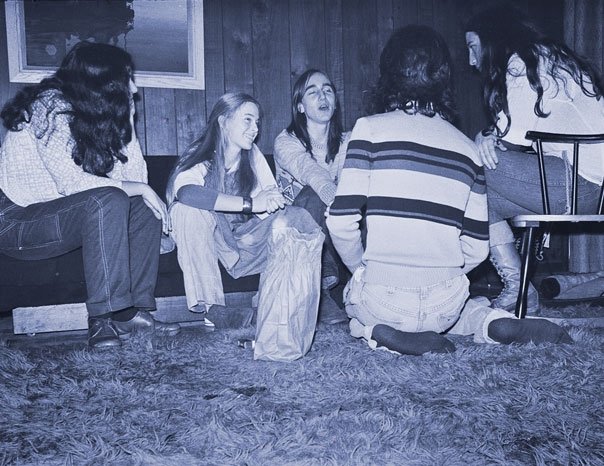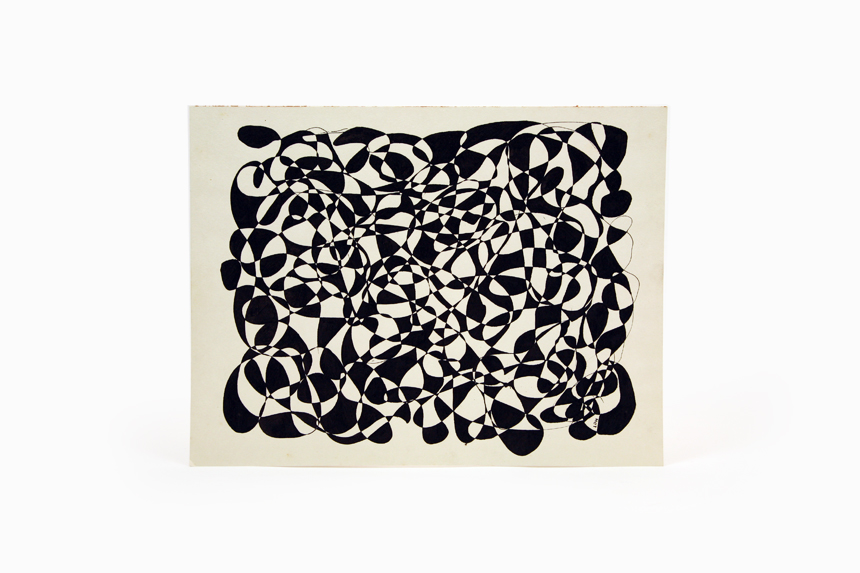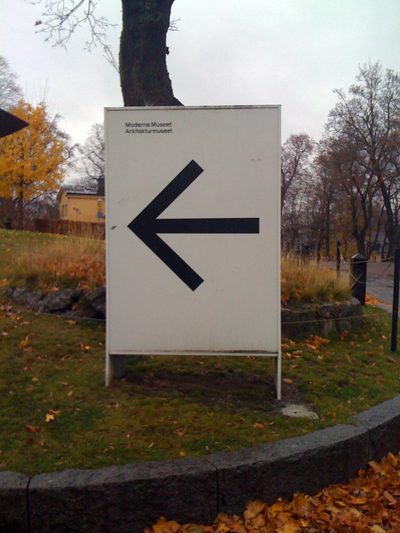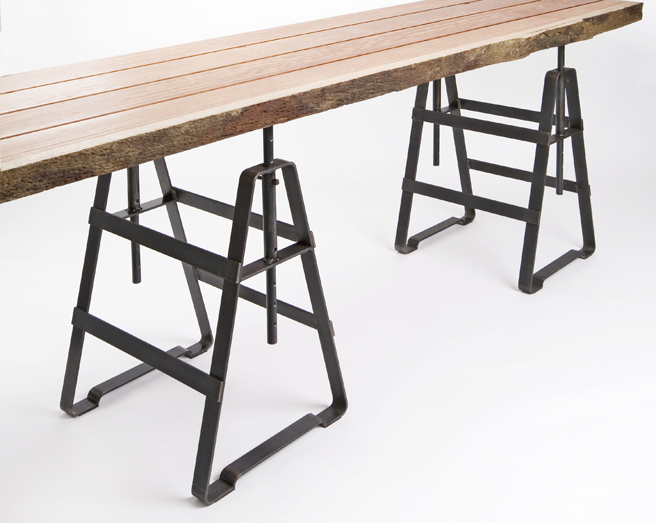Schwarz
View current page
...more recent posts
What’s notable about the present attack on "conceptual" art by Dutton and many, many others is that it is a symmetrical, distorted reflection of the very critique of "traditional" art that led artists to adopt diverse "conceptual" strategies in the first place. A great many of these (e.g. process art, abject art, performance art) attracted the zeal of their purveyors in the ‘60s, ‘70s and ‘80s because they seemed to promise some kind of critique of the art market. Traditional art forms like painting and sculpture were -- and still are, in some circles -- considered to be corrupt, because the objects they produce lend themselves to being sold, owned and traded. Barbara Rose expressed this silly conception in a particularly hyperbolic passage from the Partisan Review: "For some time now I have felt that the radicalism of Minimal and Conceptual art is fundamentally political, that its implicit aim is to discredit thoroughly the forms and institutions of dominant bourgeois culture."
The fact that such strategies devolved inexorably into their own sort of market-friendly style just proves a point. On both sides, "traditional" and "conceptual," the perceived ill of the other is actually just the displaced face of the market itself, with its tendency to transmogrify and vulgarize everything. Which should provide a lesson for critics about the kind of promises they make for art: There are no formal or esthetic solutions to the political and economic dilemmas that art faces -- only political and economic solutions. Consequently, the only critical temperament that makes any real sense is an eclectic one that doesn’t build up one or the other side into the answer for problems that they both share.
From 1967 to 1969, Tommy and Dick Smothers challenged the censors at CBS and the political establishment who tried to tame their wildly popular — and politically left-leaning — show, The Smothers Brothers Comedy Hour. The brothers lost their show, but later won a battle in court. TV critic David Bianculli joins host Terry Gross to talk about the legendary comedy duo who tackled political issues and censorship.
Based on extensive interviews with the Smothers Brothers and other key players, Bianculli describes the siblings' lives both onscreen and behind the scenes in a new book, Dangerously Funny: The Uncensored Story of the Smothers Brothers Comedy Hour.
used theatrical drapes
via vz

706 TEPPER/MEYER / FRED MEYER (San Francisco) Versitable with birch laminate top on enameled wrought-iron base. (Included in the Museum of Modern Art"s Good Design Exhibition, New York, 1953.) Tepper/Meyer decal. 29 1/2" x 60" x 29 3/4"
Ac-cent-tchu-ate the Positive
Beach Coastal Summer House Vestfold 2 by Jarmund Vigsnæs AS Architects MNAL (JVA)
Beach House with Open Space Patio in Huentelauquen by Izquierdo Lehmann
justin found this one

center for documentary studies duke univ
9h capsule hotel tokyo
fire in my bones
diggers papers
Idea-rich early announcement broadside for an event that happened on either April 2, 1967 or April 9, 1967. Author is anonymous, as most of the best Diggers documents are, but one would guess that Peter Berg, Lenore Kandel and (perhaps?) Peter Coyote and Emmett Grogan had something to do with the specific text laid down here. The concept of “life-acting” is made explicit; street theater is made literal; life becomes play.via vz
the ciao manhattan tapes
Railway luggage racks
justin found this one
Dieter Rams at the Design Museum

Price £554.00
The Heaven Freestanding Stepladder is made from aluminium sheet metal and unlike most step ladders doesn't have a corresponding support side. Instead the Heaven ladder's all in one construction means the base forms the overall support - giving Heaven a sculptural appearance.
shed house, skye

Optical Art (Ovals)
1966
LBH
ink drawing
12 x 9 in.
Price: $60
coca-cola out of costco

Everything Must Go
This sign was used to close down stores all across America. Hand-painted by Amish artist Margret Fine.
acrylic on posterboard
44 x 28 in. / reference library found this
gw bush library (place where they keep the incriminating evidence?) plans revealed / this place is so dallas. yeach!
Reporting from Atlanta - In a ruling that could leave the government open to billions of dollars in claims from Hurricane Katrina victims, a federal judge said late Wednesday that the U.S. Army Corps of Engineers had displayed "gross negligence" in failing to maintain a navigation channel -- resulting in levee breaches that flooded large swaths of greater New Orleans.
U.S. District Judge Stanwood R. Duval peppered his 156-page decision, issued in New Orleans, with harsh criticism of the Army corps, at one point citing its "insouciance, myopia and shortsightedness" in failing to maintain the Mississippi River-Gulf Outlet, known locally as MRGO.
For more than 40 years, the judge said, the corps had known that a crucial levee protecting suburban St. Bernard Parish and the Lower 9th Ward neighborhood would be compromised by the deterioration of the channel. The corps had "myriad" ways to address the problem, he wrote, but failed to do so.
the hound on tony joe white
the robert isabell collection
disneys nine old men
proper design w/ gorton steam valves
counter top bottle tree
vz
nickle plated airport runway light
via vz
road food
vz
First of all, you will notice that the word 'band' is in quote marks, only because, although you will indeed have a band name, it is highly likely that your industrial project will be completely solo. Never use your own name; always refer to the band name when referring to your work.
Since the whole idea of Industrial Music is to convey the complete fusion between Technology and Humanity, it is imperative that the band name will reflect this. Ideally, the name should have 2 words, with the first being a prefix, usually implying a technological concept, having to do with computers or any scientific field of your choice, and the second being a word, usually implying a human concept, such as a part of the human anatomy or physiology, some biological term, or, even better, a psychiatric term. Ideally, it should also be a word reflecting something that is diseased or mutated. Human diseases are great words to be used in band names; Dog diseases are even better ( e.g., rabies, distemper, kennel cough). When in doubt, it is always good to use the title of an old Skinny Puppy song (or, better yet, an obscure passage of Skinny Puppy's lyrics) for your band name.
Finally, adding a small Germanic prefix before the band name will give you a lot of credibility. For example, just the addition of a simple 'Die,' 'Das,' or 'Der' to the band name will make many people think that you hail from Essen, in the Ruhr Valley (the most industrial part of Germany), even though you may, in fact, hail from Kansas City. Spelling in a German way is also essential (even using German words, it helps to have taken German in highschool, although we will talk more about that in the 'vocals and lyrics' section of this guide later on), especially the use of accent marks and umlauts, although, be very careful not to use too many umlauts, since this can make you look like a Swedish death metal band. The simplest way to 'Germanify' your band name is to use a lot of K's, and replace any word that normally uses a 'C' with a 'K' (e.g., Mechanic should be replaced by Mekkanik).
Here are some examples of acceptable prefixes (reflecting technology or biology): elektro-, cyber-, neural- (or neuro-), bio-, geo-, neo-, terminal, somato-, trans-, sonic, magnetic
Here are some examples of acceptable words to use after the prefixes: christ, blastoma, tumor, implant, function, capillary, psychosis, carcinoma, carcinogen, mutation, wire, hemoglobin, nerve, myopia, manipulation, renal failure, influenza, schizophrenia, diptheria, castration, starvation, ebola
As you can see, the possibilities are endless. Medical textbooks provide some valuable inspiration. If you use an obscure scientific term, others may think that you are quite learned, and, in fact, may have gone to university to obtain some sort of scientific degree, and that you can quit industrial music at any time to go work at (Bio-Tech firm of your choice), but, because of your dedication to industrial music, you have foregone this lucrative career.
Finally, you don't really have to follow the old rule of being careful not to give yourself a band name that is already taken. In fact, if you do take on a band name from an already existing industrial band, provided they are obscure enough and release their albums on a different continent from yours, people will probably think their releases are yours. If, though, word gets out that you have to change your name, then make sure that this legend is repeated ad infinitum by your fans. For example, 'His band used to be called Implant, but he had to change it to Neural Implant, because there already is a band called Implant from Belgium.' This will make your fans sound like they really know about the music scene, and will imply that your music appeals to people who listen to European industrial bands.
hungry i
via abaton facebook
afc parsing the new museum controversy
custom vinyl lettering
cityproof windows
worst fucking growing season ever
11 boxes in tokyo house
again, via justin
strammer max / wooden spoon tension stool
justin found this one
obsolete pedia
via vz
bale of burlap
burlap history via earthbag building blog / sandbag
developer sells 7 acres of coney island to nyc
There is a commonly held belief that Helvetica is the signage typeface of the New York City subway system, a belief reinforced by Helvetica, Gary Hustwit’s popular 2007 documentary about the typeface. But it is not true—or rather, it is only somewhat true. Helvetica is the official typeface of the MTA today, but it was not the typeface specified by Unimark International when it created a new signage system at the end of the 1960s. Why was Helvetica not chosen originally? What was chosen in its place? Why is Helvetica used now, and when did the changeover occur? To answer those questions this essay explores several important histories: of the New York City subway system, transportation signage in the 1960s, Unimark International and, of course, Helvetica. These four strands are woven together, over nine pages, to tell a story that ultimately transcends the simple issue of Helvetica and the subway.
the least unstable primer
im still thinking about starting up painting again and looking around for very heavy weave fabric to use as a painting surface. ive already looked into weighty linens and canvas and even woven jute etc area rugs with heavier woven textures. still not satisfied. then it hits me, blasting mats!
History Behind Adirondack Chairs
There is a little town on the edge of Lake Champlain, by the Adirondack Mountains, called Westport. The first Adirondack chairs, called Westport chairs, were named after this town. In Blue Mountain Lake, New York, the Adirondack Museum proudly preserves the Adirondack chair's interesting history.
Trial and error
Each summer in Westport, New York, a man named Thomas Lee enjoyed time with his large family. Stony Sides, the home this family occupied, had a shortage of patio furniture and Lee felt he could not find relaxation. So, in 1903, on the lawn in front of the house, Thomas Lee began nailing boards together, crafting new chair designs for his 22-member family to sample. History relates that, with all of this feedback, Lee created a unique new chair with a slanted back and seat, and the now well-recognized spacious armrests. Lee's family whole-heartedly approved.
Harry Bunnell
Thomas Lee knew a carpenter who owned a modest shop in town. Lee showed his new creation to the carpenter, Harry Bunnell. Bunnell predicted that the yearly residents flocking to the region during the summer would really appreciate Lee's chair. Although Lee originally intended the Adirondack chairs to make his family's summer stay at Stony Sides more pleasant, Bunnell saw the potential for great profit. In 1904, Bunnell requested a patent, calling the Adirondack chair the Westport chair. In the summer of 1905, and without Lee's knowledge, Harry Bunnell secured the patent for what would become one of the most recognized furniture pieces ever. Best Quality! Mahogany Adirondack Chair
Success
Harry Bunnell's Westport Adirondack chair became popular all around the region. Over a twenty year period, Bunnell experimented with some variations on the original, including child Adirondack chairs and tete de tetes. Bunnell's Adirondack chairs were made of hemlock, painted in either dark brown or green, and signed by the carpenter himself. Today, Bunnell's original chairs come at a hefty price, about $1,200 each (Bunnell sold them for around $4.00).
How to Construct Rietveld Furniture (the book)
over the berlin wall
aldo leopold bench
To spy a Leopold bench in someone's yard is to know something about the family who there resides. Even if you haven't read Leopold's opening lines, "There are some who can live without wild things, and some who cannot. These essays are the delights and dilemmas of one who cannot," from A Sand County Almanac, you will appreciate this easy-to-build bench. If left untreated, this stable bench develops a characteristic gray patina, however, putting some preservative where bench meets ground will prolong its life. Its form, resting alone under a tree or in congregation around a firepit, reminds us of Leopold's thoughtfulness:
"When some remote ancestor of ours invented the shovel, he became a giver: He could plant a tree. And when the axe was invented, he became a taker: He could chop it down. Whoever owns land has thus assumed, whether he knows it or not, the divine functions of creating and destroying plants."
"The last word in ignorance is the man who says of an animal or plant, 'What good is it?' If the land mechanism as a whole is good, then every part is good, whether we understand it or not. If the biota, in the course of aeons, has built something we like but do not understand, then who but a fool would discard seemingly useless parts? To keep every cog and wheel is the first precaution of intelligent tinkering."
Materials: One 2x6x33", one 2x10x30", one 2x8x10', six 3/8"x 31/2" carriage bolts with washer and nut, twelve 3/8" x 31/2" #12 or #14 flathead wood screws. Use Douglas Fir for your Leopold bench, if you can, and customize its size to suit you. The materials listed will make a 33" bench, but you may choose to build out to 48".
a simple build
from the worlds going to hell in a bucket desk:
ferrari world abu dhabi
via things
bartok
justin found this one
One of the many revelations here is the quasi-religious mysticism that infused parts of the Bauhaus in its earliest years. The first image you see when you step into the galleries is an Expressionist painting from 1919 by Johannes Itten, who ran the school’s introductory course. Its colorful abstract forms, which break down into a dense pattern of overlapping triangles, circles and rectangles, evoke the refracted glass of a stained-glass cathedral window.
Just below it is a design for a coffin lid drawn in 1920 by Lothar Schreyer, a director of the Bauhaus theater, for his wife (which, in a nice Freudian twist, was used for his mother’s burial instead). A woman’s figure, composed of interlocking circles and laid over a vibrant background of gray and blue, is framed by the lid’s trapezoidal outline. Farther along you come up against Marcel Breuer’s 1921 “African” chair, whose crudely chiseled wood frame looks so out of place with conventional images of the Bauhaus that you may wonder if you’ve walked into the wrong show.
These works reveal an ambivalence about the machine age and what was being left behind. Even as Walter Gropius, the school’s founding director, was promoting a mass-production aesthetic, Itten and others were advocating a more atavistic approach, one that was rooted in the skills of the medieval craftsman. (Itten even began his classes on abstract art with a series of yoga exercises that were meant to reawaken the physical senses and bring the students in closer contact with their work.)
The idea of "boundless abstraction" first surfaced in the water lily murals of Monet -- for Greenberg they were abstract in all but name, and set the precedent for Pollock’s all-over mural paintings -- and was extended by Kandinsky, however hesitantly, in his early works, particularly the famous First Abstract Watercolor (1911, scholars now say 1912 or 1913). There the eccentric continuum of petite color and line perceptions moves beyond the technical boundaries of the work, suggesting an infinite flux of uncontainable visual sensations. Pollock’s implicitly boundless mural abstractions are the climactic statement of "abstraction as total environment," correlate with the idea of the "environment as totally abstract."kuspit building up to a stella russo review
Abstraction came to dominate thinking about the environment as well as art, and the triumph of abstraction signaled by such opposed movements as Abstract Expressionism and Minimalism confirmed that it had become a generalized mode of perception and cognition: only when art and the environment were perceived and understood in abstract terms was their presence convincing. That is the point of van Doesburg’s five-step transformation of a naturally appearing cow into an abstract construction that seemed to have no relation to a cow, yet was an epitomizing summary of it in abstract terms. Duchamp’s readymades, which are everyday objects found in the environment, and given a little twist (or "assistance," as he said), can be read as abstract artifacts), however manqué. With the triumph of abstract visual thinking, every dumb thing reads as abstract art: thus the "surprise" of art, suddenly self-evident and extraordinarily present in the banally evident and ordinarily present.
It became de rigueur to see and understand things abstractly -- it was the modern take on them. To distill and convert old appearances into new abstractions was to modernize them. Sol LeWitt’s photographs of urban geometry -- manholes and brick walls -- makes the innate and intimate abstractness of the urban environment explicit, while suggesting the interchangeability and simultaneity of abstraction and the representation of reality. Mondrian came to prefer urban architecture to natural landscape because the former was overtly abstract while the latter was only subliminally abstract -- he spent the first part of his career extracting that abstractness, no doubt to convince himself that the abstract was "real." He came to regard his art as a "representation" of the "abstract real," in the (mystical?) belief that only the abstract was (really) real. Abstract art became the only "correct" and "real" art because it revealed the abstract truth, which made it seem "scientific" -- certainly Mondrian had what could be called a "scientific esthetics," as his preoccupation with precision suggests -- or at least an "experimental esthetics," for his oeuvre is a series of changing esthetic experiments designed to demonstrate the reality of the abstract.
The Jazz Loft Project
Jazz in the Flower District:
Photographer W. Eugene Smith moved into a loft at 821 Sixth Avenue, in the heart of New York’s Flower District, in 1957. The place had already become a hangout for artists, writers and especially jazz musicians, who rehearsed and jammed there. Among the visitors to the loft: Thelonious Monk, Zoot Sims, Bill Evans, Steve Swallow, Mose Allison, Bob Brookmeyer and hundreds more, over a period of about 8 years.
Four Thousand Hours!:
As Smith settled in and made a home and studio there, he became fascinated – and some say obsessed – with the life in and around the loft. He began to document the activity there in photographs and audio tapes. By the time he left the loft in the late ‘60’s, he’d shot 40,000 photos of musicians, artists, empty rooms, views out the window, jam sessions and parties. He’d recorded roughly 4000 hours of audio tape, including rehearsals for the famous 1959 Big Band concert at Town Hall, featuring the Thelonious Monk Tentet, as well as hundreds of jam sessions among players, known and obscure. Along with the music: conversations, meowing cats, casual visits from the cop on the beat, television and radio programs that happened to be on while the tape was running.
The Project:
Sara Fishko and WNYC, in collaboration with partners at the Center for Documentary Studies at Duke and the New York Public Library, are building a radio series from the tapes of loft life discovered in W. Eugene Smith’s vast archive.

missing table and chairs
justin found this
whole tree architecture
beware the free chair
bay ridge gingerbread house
via aw and brownstoner
Claude Lévi-Strauss, the French anthropologist who transformed Western understanding of what was once called “primitive man” and who towered over the French intellectual scene in the 1960s and ’70s, has died at 100.
pressed penny
The legend begins with Erwin George Baker. Baker was born in Indiana in 1882. Throughout the 1930s, he became an extremely popular motorcycle and automobile race driver. Cannonball BakerAmong the many accomplishments in his prestigious career; he won the first ever race at Indianapolis Motor Speedway in 1909, placed 11th in the 1922 Indianapolis 500 and became the first commissioner of NASCAR. However, he gained his greatest notoriety in 1915 after a New York to Los Angeles drive which took 11 days and 7 hours. It was this intercontinental drive that earned him the nickname “Cannonball” after the famous Illinois Central railway car, “The Cannonball”. In 1933 he would make the cross country trek again, but this time, he’d do it in only 53 hours and 30 minutes, a record that would stand for almost 40 years. “Cannonball” Baker would pass away in 1960 as one of the most revered and popular automobile and motorcycle drivers of all time. He was inducted into the Motorcycle Hall of Fame in 1998.
Brock YatesFast forward to 1968. Brock Yates is an executive editor for Car & Driver magazine. He writes a scathing article called “The Grosse Pointe Myopians”, which critiques the auto industry, its management and its products which makes him infamous within the auto industry. Then, in 1971, Yates, along with fellow Car & Driver editor Steve Smith, decides to create an unofficial, and illegal, intercontinental road race. Inspired by the travel records of Erwin “Cannonball” Baker, the race begins in New York and ends in Redondo Beach, CA. Officially dubbed the Cannonball Baker Sea-To-Shining-Sea Memorial Trophy Dash, the race would serve as a celebration of the US national highway system and also a protest of the soon-to-be passed 55mph speed limit. Yates wanted to prove that careful drivers can safely navigate this country’s interstate system at high speeds in much the same way the Germans do with the Autobahn. Yates also believed that if Erwin Baker could complete the journey in a record time of 53 hours and 30 minutes over unfinished roads and horrible conditions, then a modern driver should have no problem doing it over the uninterrupted expanse of the national interstate system.
Does anyone now believe that Modernism in any of the arts simply disappeared into a black hole in order to make room for Postmodernism? You don’t have to go back far in time to discover trendy architectural academics that were promulgating variations on this theme. As a result of this massive historical distortion codified both in highbrow architectural journalism and college texts, some lesser known architects dedicated to thinking of Modernism as an ever-regenerative mind-set and rigorous tool kit for bold design were marginalized. And among the most talented? Gunnar Birkerts.
My first experience of Birkerts’ architectural power was during a visit to the Kemper Museum of Modern Art and Design in Kansas City. Overshadowed by the nearby Nelson-Atkins museum, it must be the most overlooked small museum in the U.S. Gunnar Birkerts: Metaphoric Modernist offers a fine assortment of Birkerts’ plans: initial and finished drawings and clear color photographs of the Kemper. Martin Schwartz, whose commentary fills most of this text, describes the Kemper as “muscular and assertive even if it is only about 23,000 square feet in area. One observer is reported to have called this museum, ‘the biggest little building he ever saw.’” I would concur – and add that the interior spaces possess a swooping vertiginous dynamism wholly appropriate to the Kemper’s collection. Think of an architect influenced by Aalto who brings to that Northern European austere sensibility the flash and dash of Futurism.
esquerita rules
the hound
twentinox sierra papa large chain mail
milk design stairs and rails
bebo y chucho valdes

KOKO architektid fahle house
marmol radziner prefabs
c. 1765 PELATIAH LEETE, III HOUSE, GUILFORD CT
via amy wilson
altered images
Musician Chris Butler was looking for a house where he could make loud music without disturbing his neighbors. He found the perfect house and for a deal, but it came with certain "conditions." The house was the childhood home of Jeffrey Dahmer and the scene of Dahmer's first killing.

the car talk guys were yacking about the legend of the $50.00 army surplus jeep in a crate packed in cosmoline.
via jeepparts



